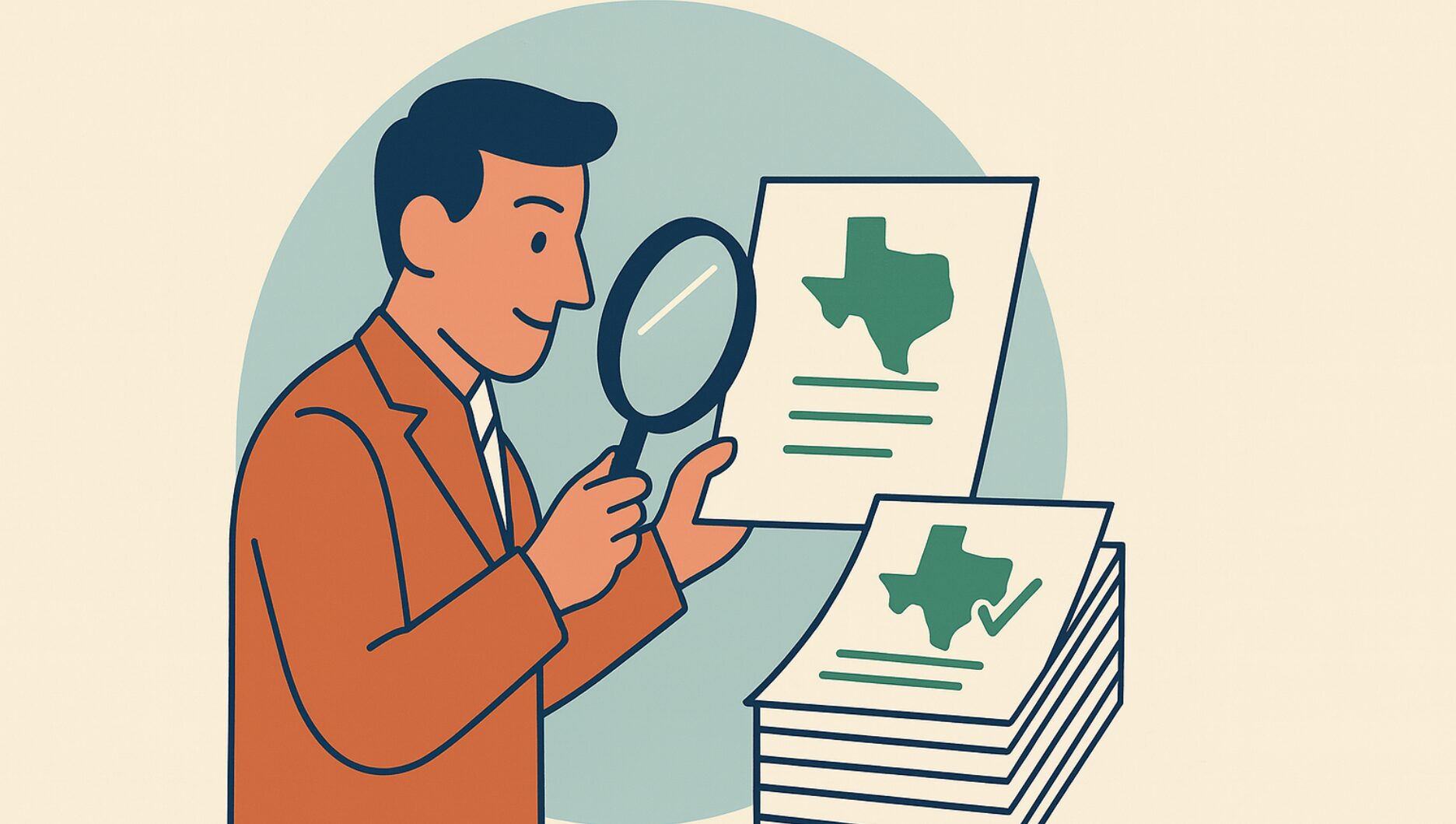Taking a look at the budget and Texas’ $80 billion budget surplus
Executive Summary
Texas Comptroller Glenn Hegar’s Biennial Revenue Estimate (BRE) biennium projects a budget surplus of $23.76 billion in state funds for the current 2024-25 fiscal biennium.
But that does not tell the whole story. Projecting that surplus into the 2026-27 biennium, accounting for $9 billion in revenue growth over the next two years, and adding in the $23.4 billion balance in Texas’ Economic Stabilization Fund (ESF), the combined surplus funds available for the Texas Legislature this session for spending or using for property tax relief range from $70 billion to $80 billion in state funds.
The surplus, while seemingly positive, reflects an alarming pattern of revenue growth outpacing actual spending needs. This “excessive silver and gold” (Deuteronomy 17:17) has led to poor fiscal discipline and restraint by Texas policymakers, resulting in rapidly increased spending rather than a reduced tax burden on our citizens. Examples of poor fiscal discipline in the current regular session of the Texas Legislature include $1.5 billion for film subsidies to make Texas the Film Capital of the World, $5 billion in subsidies for natural gas generators, an $11 billion state funding increase for government schools, and an additional $2.3 billion for state employees.
Out of the $80 billion surplus, more than $71 billion, or 89.1%, is dedicated to new spending in this biennium or possible new spending in a future biennium. Only $6.5 billion, or 8.2%, is being returned to taxpayers this session in the form of property tax relief.
Instead of these perpetual cycles of budget surpluses and spending growth, Texas should dedicate all future surpluses to tax relief. A logical method to achieve this is through permanent reductions in school property taxes, thereby easing the financial load on families and local communities.
By returning these surplus funds to taxpayers, Texas can stimulate local economies, incentivize responsible fiscal policy, and ensure that growth in state revenue translates into real, tangible benefits for its residents rather than an ever-expanding government footprint.
Is the Texas Budget Conservative?
Most people would be hard pressed to call a budget that includes at least $45 billion in new spending (see below) and only $6.5 billion for property tax relief conservative, but that is what Texas Lt. Governor Dan Patrick did last week.
When asked about critics of the budget last week, Patrick responded, “If one person says, ‘I don’t like the budget,’ I think that one person just wants to make news. But it’s a conservative budget, and we’ve always had a conservative budget.”
Patrick made three points to justify his view that the budget is conservative:
- “Our budget is under population times and inflation, and it’s a conservative budget.” This measurement by Texas’ Legislative Budget Board is accomplished through sleight of hand, comparing total spending for the current biennium to the initial appropriations for the 2026-27 biennium. Budget analyst Jeramy Kitchen explains some of the problems with the current budget. Economist Vance Ginn shows that the spending of state funds in the proposed 2026-27 budget will increase by 43% over the 2022-23 appropriations from 2021. During that period, population growth times inflation is about 27%, much lower than Texas’ state funds spending growth.
- “Anyone who says, ‘This is not a conservative budget,’ how is it we ended up with a $40 billion surplus? How is it we ended up with a $24 billion surplus?” While economic growth has provided the surpluses of recent years, the truth is that the Texas Legislature has spent almost every single dollar it can get its hands on. This session, for instance, new spending is about $45 billion. The Texas Comptroller calculates (p. 16) that the Legislature is leaving only $2.9 billion unspent under the Texas Constitution’s Balanced Budget Amendment. In 2023, the Legislative Budget Board calculated that the Legislature left only $1.6 billion on the table under the Texas Constitution’s Tax Spending Limit.
- “How is it that we have $28 billion in the Rainy Day Fund?” It is true that there is $28 billion in Texas’ Rainy Day Fund, officially known as the Economic Stabilization Fund. But historically, the ESF has been used as a slush fund rather than as savings to meet emergency spending needs in case of an economic downturn; almost $18 billion has been spent out of the ESF. And it was Patrick who called for priority legislation this session (SB 23—not yet filed) that would change the ESF into the Texas Sovereign Fund, removing the limit on how much money could be in the fund and making it available for whatever spending priorities the Legislature prefers.
Since 2019, state spending in the Texas budget has increased about 13.7% biennially, including only a 2.7% increase in 2021 when spending was constrained by the COVID lockdown economic downturn. There is nothing conservative about the increased spending rate of taxpayer money that Texans have paid for since 2019.
Calculating Texas’ $80 Billion in Surplus Funds for the 2026-27 Fiscal Biennium
Every January of odd-numbered years, as required by the Texas Constitution (Article III, Section 49a), the Texas Comptroller of Public Accounts publishes its Biennial Revenue Estimate (BRE). This report is not only a statutory requirement but a critical guide for the Texas Legislature.
The primary purpose of the revenue estimate is to inform the Texas Legislature how much money it can spend under the Texas Constitution’s balanced budget amendment (Article III, Section 49b), which limits appropriations to “the cash (on hand) and anticipated revenue of the funds” determined by the Comptroller. Among the many figures in the BRE, one number tends to capture the public’s attention: the forecasted cash on hand—often referred to as the state’s budget surplus.
For the 2024–25 fiscal biennium, the Comptroller estimated a surplus of $23.76 billion. This surplus, representing excess funds not required for the current fiscal year’s obligations, plays a dual role. On the one hand, it is a cushion for the current fiscal biennium that could be used for new spending or tax relief; on the other, it sets a baseline potential surplus of $23.76 billion for the upcoming 2026-27 biennium. Adding the actual 2024-25 surplus to the potential 2026-27 surplus provides the Texas Legislature with a minimum potential $47.5 billion in surplus funds for this session.
In addition, Texas’ general state revenue-related funds are projected to increase $9 billion, or 5.4%, over the next two years. This provides a range for the surplus state funds available this session from $47.5 billion to $56.5 billion.
There is one more important supplemental source of surplus funds: Texas’ Economic Stabilization Fund (ESF). The Comptroller projects that at the end of the 2024–25 biennium, the ESF will hold a balance of approximately $23.43 billion. Although these funds can be used only if the Legislature specifically directs spending from the ESF, they represent additional liquidity that could be effectively added to the surplus available for the upcoming biennium that could be used for tax relief.
Taking the ESF balance into account, the potential budget surplus for the 2026-27 biennium ranges from $70.1 billion to $80 billion.
What the Legislature is Doing with its $80 Billion in Surplus State Funds
Texas politicians have only two choices for what they can do with surplus funds: they can spend them or return them to taxpayers in the form of tax cuts. Sometimes, legislators decide to put the funds aside into “savings,” such as cash accounts or the Economic Stabilization Fund. But that only delays the decision of how they are ultimately going to use the funds. The following chart shows how the Legislature is currently disposing of its $80 billion surplus.
| Use of Surplus State Funds in the 79th Texas Legislature | ||
| Category | Amount | Percent |
| New Spending (CSHB 500 & House CSSB 1) | $44,936,151,316 | 56.2% |
| Savings (ESF and Funds Balance) | $26,330,000,000 | 32.9% |
| Returned to Taxpayers (property tax relief) | $6,533,800,000 | 8.2% |
| Unaccounted For | $2,200,048,684 | 2.7% |
| Total | $80,000,000,000 | |
Of the $80 billion in surplus funds only $6.5 billion, or 8.2%, is being returned to taxpayers in the form of property tax relief. More than $71 billion, or 89.1%, is dedicated to new spending in this biennium or possible new spending in a future biennium (historically, most funds in the ESF have been used for new spending—almost $18 billion since its inception).
Assumptions and Data Used in Determining Potential Surplus Funds
The calculations of the $80 billion in surplus funds rest on several key assumptions:
- Texas Comptroller’s Biennial Revenue Estimate: The calculations are based on the Texas Comptroller’s BRE estimates of the 2024-25 budget surplus, new funds available for the 2026-27 biennium, and the Comptroller’s estimate of funds available in the Economic Stabilization Fund.
- Supplemental Appropriations: Historically, supplemental appropriations have been used to meet funding shortfalls in the current biennium. However, almost all the funding in House Bill 500, this session’s supplemental appropriations bill, covers the two-year period going forward from the effective date of the bill. Therefore, all of the $13.7 billion in HB 500 is counted as new spending in these calculations.
- Stable Government Size: The minimum surplus calculation assumes that increases in spending for the 2026-27 biennium are new spending, increasing the size and scope of government. The significant expansion in spending for the 2026-27 biennium under HB 500 and Senate Bill 1 will reduce the carryover 2024-25 surplus and the potential 2026-27 surplus. And thus reduce the money available for property tax relief.
- Revenue Growth Rate: The maximum surplus calculation is based on the comptroller’s forecast that state revenue-related funds would increase $9 billion, or 5.4%, over the next two years. If actual revenue growth deviates from this—either due to economic conditions, policy changes, or unforeseen events—the surplus could be lower or higher.
- ESF Utilization: The ESF balance is only available if the Legislature directs that spending be drawn from it. In practice, this decision is subject to political considerations and economic strategy. Some policymakers may prefer to keep the ESF intact as a safeguard against economic shocks, but the funds are still available for spending on non-emergency items and have been used for that purpose before. Since its inception, almost $18 billion of ESF funds have been appropriated for new spending by the Texas Legislature.
Conclusion
Most conservatives agree that government is already too big. Allowing the size and scope of government to increase every year means those fighting for liberty are falling behind every year. This fact alone is enough to challenge the idea that the proposed 2026-27 Texas Budget is conservative. Adding to that that the budget has been growing much faster than population growth plus inflation seals the deal. Neither the budget passed by the Texas Senate earlier this year nor the one the Texas House of Representatives will vote on this Thursday is conservative.
Only major cuts can save this budget and make it conservative.
Texans for Fiscal Responsibility relies on the support of private donors across the Lone Star State in order to promote fiscal responsibility and pro-taxpayer government in Texas. Please consider supporting our efforts! Thank you!
Get The Fiscal Note, our free weekly roll-up on all the current events that could impact your wallet. Subscribe today!




